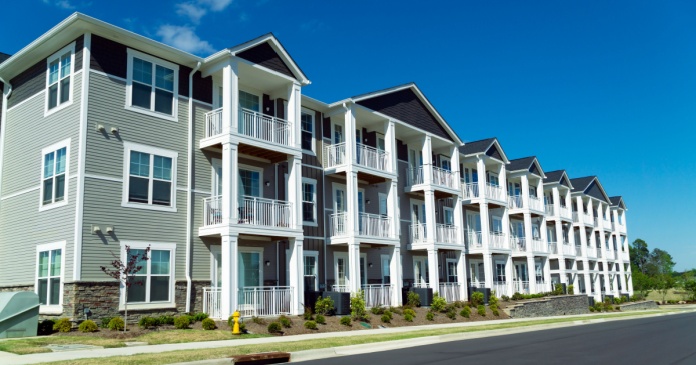Parrell testified in May on behalf of the National Multi Housing Council (NMHC) and the National Apartment Association (NAA) before the Senate Banking Committee’s hearing on housing finance reform.
Highlighting elements of the existing housing finance system that worked, he explained that Fannie Mae and Freddie Mac’s multifamily programs were not part of the meltdown and are not broken.
“Their multifamily programs have outperformed the private markets and have default rates of less than one percent—one-tenth the size of the delinquency/default rates plaguing single family,” he said. “And they remain profitable. They have generated $2 billion for the federal government since they were placed in conservatorship.”
He warned lawmakers to be careful not to create a capital shortage for the lower-profile, yet vital, apartment sector as they fix the well-documented single-family problems. He explained that the apartment industry has relied heavily on the liquidity provided by Fannie Mae and Freddie Mac to develop and maintain workforce housing in all markets and all economic conditions.
“History has shown that the private market simply cannot meet the entire capital needs of the apartment sector,” he said. “Absent a market dislocation like we just experienced, private capital is good at financing higher-end properties in top-tier markets, but it is not as good at supporting the more complex deals, workforce housing or housing in second-tier markets.”
As a result of the existing federal backstop, the apartment industry has produced more than 10 million apartments affordable to working families since 1996.
Without a federal credit guarantee, the apartment industry cannot meet the nation’s current or future housing needs. This is important, Parrell noted, because changing demographics and new economic realities are driving more people away from the typical suburban house and causing a surge in rental demand.
In this decade, renters could make up more than half of all new households—more than seven million new renter households. Because of these changes, University of Utah Professor Arthur C. Nelson predicts that half of all new homes built between 2005 and 2030 should be rental units.
Parrell urged Congress to retain the successful elements of the current system as they phase out Fannie Mae and Freddie Mac: “Their multifamily programs met the mark, even during the financial crisis,” he said. “They can serve as a model for a continued federal guarantee for rental housing in a reformed housing finance model.”
Backlog of MH mortgages at HUD bring economic consequences
HUD’s failure to keep pace with the volume of multifamily mortgage applications is exacerbating the nation’s shortage of workforce housing, jeopardizing the thousands of jobs created by new apartment construction and reducing the new revenues the program could be generating for the federal government.
That is the message that the National Multi Housing Council (NMHC) and National Apartment Association (NAA) delivered to Congress in testimony before the House Financial Services Committee within hours of testifying before the Senate Banking Committee.
Peter Evans, a partner at Chicago-based Moran and Company, told lawmakers that demand for apartment financing from the Federal Housing Administration (FHA) has increased more than five-fold, with applications increasing from $2 billion annually to $10 billion.
FHA has been unable to keep up with demand as loan processing often exceeds 18-24 months, and borrowers have no idea where their applications are in the process.
The consequences of this backlog are magnified by the fact that private capital markets have not recovered, leaving apartment firms with few alternatives. The result is a dramatic reduction in new apartment construction at a time when the nation’s demand for affordable rental housing is growing faster than in recent decades.
“In 2010, new apartment construction set a post-1963 low at just 97,000 new starts. We need to build 300,000 units a year to meet demand, yet we’ll start fewer than half that many this year,” Evans said.
In his testimony, Evans offered numerous suggestions to streamline FHA processing that would still protect the safety and soundness of FHA’s multifamily portfolio. Among other things, FHA should instruct field offices to more consistently follow its multifamily accelerated processing guide to expedite transactions.
Instead of requiring all loans over $15 million to be processed by a national review committee, it should impose this additional threshold only on loans that exceed the program’s terms and requirements. FHA should also create a special underwriting team for large, atypical loans to expedite processing of more standard transactions.
Evans recognized HUD’s effort to work with stakeholders to address its backlog and other administrative issues, but reiterated that HUD needs more resources to accommodate the increased volume in the FHA multifamily programs.
Finally, Evans took the opportunity to address suggestions that FHA replace or take over Fannie Mae and Freddie Mac’s multifamily programs. He expressed the industry’s strong opposition to such proposals, noting that FHA is woefully unprepared to assume a larger role. In addition, FHA serves a specific niche within the market and is simply not capable of providing the full range of unique and complex loans required by the apartment sector.














